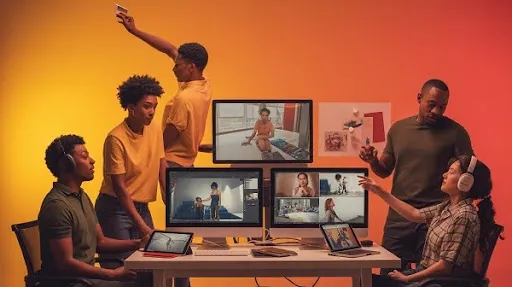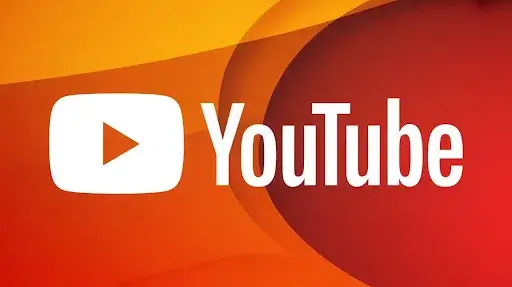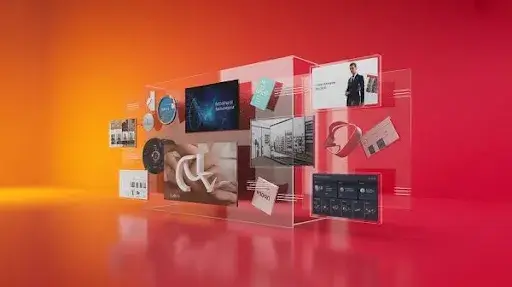Scroll through any feed today, and what grabs you? Videos. They stop thumbs, spark curiosity, and tell stories in seconds. Businesses aren’t just testing video anymore, it’s become the default way to connect with people.
Stats prove the point. 91% of businesses use video as a marketing tool. Users are watching hours of online video content every week, and brands that show, not just tell, get remembered.
The question isn’t if you should use video. The question is how you use it. That’s where real video marketing examples come in. They show what works, why it works, and how you can adapt it for your brand.
The following list isn’t theory. It’s a mix of tech marketing video examples, software explainer videos, product demos, and more. Each one shows how storytelling, visuals, and clarity can turn complicated ideas into content that drives results.
1. Freshdesk
Support teams live in chaos when tasks are scattered. Freshdesk nailed this pain point with an animated software product video that literally shows tickets floating around with no control. It’s a perfect metaphor anyone in customer support instantly understands.
The solution? Parent-Child ticketing. The video visually links tasks, shows how the feature works, and delivers a strong message: “Nothing slips through the cracks.”
What You Can Steal From This
- Use animation as a visual metaphor for real struggles.
- Show the “before and after” so the transformation is clear.
- Keep onboarding videos short (this one is under 2 minutes).
This is one of the best software explainer video examples because it explains a dry feature in a way that feels alive.
2. Volt Active Data
Telecom companies can’t afford delays when customers expect real-time offers. Volt highlighted this by showing the chaos of missed opportunities in milliseconds. Then it introduced its platform, which acts instantly on streaming data.
It’s a sharp example of a product launch video. Instead of focusing on every technical detail, it picked one big promise: deliver personalized offers in real-time. The urgency in the storytelling matches the urgency of the product’s purpose.
What You Can Steal From This
- Don’t try to say everything. Pick the one big promise.
- Use pacing and editing to create urgency.
- Tailor the problem/solution story to match your audience’s stakes.
3. APX Payments
Collecting client payments in law firms is messy. APX showed the friction visually, payments scattered everywhere, data unorganized. Then it flipped the narrative by presenting a clean, secure flow that anyone can follow.
This is classic software explainer video territory: take a boring but important problem, show the struggle, and then clearly illustrate the relief. What makes this stand out is the trust-building detail, showing encryption and compliance visually without jargon.
What You Can Steal From This
- Animation doesn’t just entertain. It simplifies trust-heavy topics like payments.
- Show security visually instead of saying “we’re secure.”
- Integration points are worth highlighting because they reduce adoption fears.
4. TasWater
Not every enterprise software video needs to feel corporate. TasWater used local storytelling, tying its product to Tasmania’s natural beauty and water issues. Showing stormwater challenges and sewage overflow problems made the issue relatable.
Then the software solution stepped in, monitoring, inspections, and upgrades. The storytelling balance was clear: this isn’t just software, it’s about protecting communities and the environment.
What You Can Steal From This
- Ground technical products in real, local stories.
- Animation can make environmental or civic topics approachable.
- Calls to action can be about community responsibility, not just sales.
5. Immigration New Zealand
Applying for visas can feel overwhelming. This product feature spotlight video breaks it down into simple ticks on a checklist. The animation shows each step, explains document uploads, and reassures viewers that they can save progress.
It’s practical and reassuring, two emotions government-related processes often lack. The strongest part? Positioning the e-visa as the modern choice, faster, cheaper, and flexible.
What You Can Steal From This
- If your process feels heavy, lighten it with visuals that simplify steps.
- Empower viewers with flexibility (apply anywhere, save anytime).
- Don’t just explain features, show how they reduce stress.
6. TrafficGuard
Mobile advertisers hate wasted spend on fake clicks. TrafficGuard starts here, dramatizing invalid traffic as the enemy. Then it shows how its SaaS marketing video solution stops fraud at the click stage, not after the damage is done.
What makes this example strong is the positioning. It’s not just “we detect fraud.” It’s “we prevent it before it even starts.” That difference in timing is what builds confidence.
What You Can Steal From This
- Position your solution as upstream, not just reactive.
- Use visuals to show the exact point where you intercept the problem.
- Analytics dashboards look better when shown with motion, not static screenshots.
7. Square
Gift cards don’t sound exciting. Yet Square turned this into one of the most relatable demo video examples. It showed how small businesses can use gift cards to boost spending and bring customers back.
The storytelling is smart: it starts with the owner’s growth challenges, then shows the ease of selling and tracking gift cards both online and offline. The visuals emphasize convenience for both owner and customer.
What You Can Steal From This
- Take an ordinary feature and show how it creates growth.
- Use animation styles that feel friendly and small-business focused.
- Demonstrate the customer’s journey, not just the business owner’s.
8. GE
Energy projects are high-stakes. GE leaned into this by showing reliability numbers and unit details in its product demo video. Instead of shying away from technical detail, it highlighted it, then explained benefits like faster deployment and higher efficiency.
The trick here is balance. Too much technical jargon loses people, but animated callouts made the information digestible. By combining detail with clarity, GE turned complexity into confidence.
What You Can Steal From This
- Don’t hide technical strength, translate it.
- Pair numbers with simple visuals so they stick.
- Reliability claims feel stronger with proof, not adjectives.
9. Bullhorn
Renewable energy chains are not easy to explain. Bullhorn pulled it off by animating every step: wind and solar power → green hydrogen → carbon-neutral fuels. By breaking it into simple visuals, the video makes sustainability accessible.
For brands creating enterprise software videos around technical processes, this is a gold example. It shows you can communicate something highly scientific in a way anyone can follow.
What You Can Steal From This
- Break long processes into digestible steps.
- Use color and flow in animation to guide attention.
- Sustainability messages work best when paired with clarity, not buzzwords.
10. LITEON
Smart cities sound abstract until you see them in action. LITEON created a smart city marketing video that places viewers inside an urban environment powered by connected solutions. From traffic flow to energy use, the video visually demonstrates how sensors and data can improve daily life.
The key here is relatability. Instead of listing technical components, it shows what a safer crosswalk or cleaner air feels like. This positions the product as not just smart tech, but as human-centered innovation.
What You Can Steal From This
- Don’t just describe features, show everyday outcomes.
- Use animation to scale complex systems without losing clarity.
- Make your audience imagine living in the solution.
11. CBI
The Centre for the Promotion of Imports (CBI) had a challenge: explaining international trade development programs. Instead of burying the message in reports, it produced an engaging video highlighting how its initiatives connect producers in developing countries with global markets.
The video focuses on real human impact. Farmers, artisans, and small manufacturers are at the heart of the story, while the program itself is positioned as the bridge. This example proves that even complex policy-driven work can feel emotional and relatable with the right storytelling.
What You Can Steal From This
- Lead with people, not processes.
- Show impact through transformation stories.
- Policy or development videos need emotion to stay memorable.
12. Root Planner Software
Delivery route planning can feel like a maze. Root Planner’s software product video captures this perfectly with animation that dramatizes scattered routes, stressed drivers, and endless spreadsheets. The chaos is instantly relatable to any business dealing with logistics headaches.
Then comes the transformation. The animation shifts into clean, automated routes with real-time tracking and analytics. Features like vehicle tax deductions and cost savings are highlighted without drowning viewers in jargon. The clear before-and-after storytelling makes this a strong example of how to communicate complex value with simple visuals.
What You Can Steal From This
- Show chaos first, then reveal calm to illustrate transformation.
- Highlight multiple benefits without clutter; visuals keep it clean.
- Logistics-heavy topics resonate more with clear metaphors than technical lists.
13. HRS
Corporate travel management is usually messy. HRS tackled this in a software onboarding video that makes the transition from chaos to order both simple and engaging. The video shows how the platform unifies transient travel, long stays, meetings, and group bookings into a single, manageable system.
The payoff isn’t just efficiency. It emphasizes safety, sustainability, savings, and traveler satisfaction, all core priorities in business travel today. Smart automation removes manual booking pain, and API integrations make adoption smooth. By using animation to walk viewers through the journey, HRS proves that onboarding content can inspire as well as instruct.
What You Can Steal From This
- Use animated journeys to represent product reach and global impact.
- Address multiple pain points but tie them back to one central solution.
- Onboarding videos should reassure as much as they educate.
14. Accenture
Data analytics usually feels overwhelming, but Accenture turned it into an engaging use case demonstration video. The story begins with something small, choosing a movie, then expands into large-scale challenges like census data processing. The visuals show how scattered information becomes meaningful through applied intelligence.
The beauty of this video lies in its clarity. By animating data flows and synthesizing insights, it strips away jargon and highlights the benefit: smarter, faster decisions. It’s proof that even abstract capabilities like AI and big data can feel tangible with the right storytelling approach.
What You Can Steal From This
- Start with small, everyday examples before scaling to enterprise impact.
- Visualize technical capabilities to make them less intimidating.
- Keep explanations focused on results, not just processes.
15. VisaNet
Financial systems don’t usually make for exciting content until you see VisaNet’s technology explainer video. It demonstrates how VisaNet + AI processes massive transaction volumes with speed, resilience, and predictive power.
The animation highlights critical features: Smarter Stand-In Processing for lost bank connectivity, Smarter Settlement Forecasting to predict bank needs, and Smarter Posting to give consumers instant balance visibility. Each detail is made clear through animation, showing the precision and reliability of the system without burying viewers in technical terms.
What You Can Steal From This
- Use visual detail to prove accuracy instead of claiming it.
- Show how features directly impact end users, not just institutions.
- Technology explainer videos should feel fast-paced to match the subject.
Frequently Asked Questions
Why are video marketing examples important for B2B brands?
They turn abstract solutions into clear, visual stories. Case studies and explainer videos help potential buyers quickly understand complex offerings, which builds trust and accelerates decision-making.
What makes software explainer videos so effective?
They simplify complicated features into visual flows that anyone can follow. Instead of reading technical documentation, viewers see exactly how a product solves a problem.
How long should a product demo video be?
Most effective demo videos run between 90 seconds and 3 minutes. Shorter videos grab attention quickly, while longer formats work best for deeper, sales-stage explanations.
Can video marketing examples work for small businesses too?
Absolutely. Small businesses can benefit from short, animated explainer videos, customer testimonial videos, or simple product showcases. You don’t need a big budget to make content that converts.
What’s the ROI of using video in marketing?
Studies show video can increase conversions by up to 80%. For SaaS and B2B brands, it reduces churn, accelerates onboarding, and improves lead generation by making solutions easier to understand.
Final Words
The best video marketing examples don’t just showcase products; they make ideas clear, relatable, and inspiring. From SaaS explainer videos that simplify onboarding to enterprise demos that build trust, the pattern is the same: clarity plus emotion equals impact.
Whether you’re launching a new product, teaching a feature, or sharing a brand story, the lesson is simple. Use video to show, not tell. Focus on the pain points your audience feels every day, then, with the help of 3D animation services, illustrate the transformation your solution delivers.
Video isn’t optional anymore; it’s the most direct path to attention, trust, and growth. The sooner you adapt, the faster your brand stands out. Get in touch with Prolific Studio, one of the best animation studios in Massachusetts, and have a killer marketing video ready for your brand.







